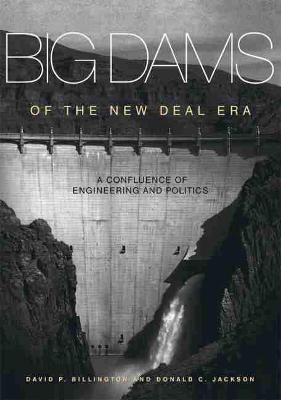The massive dams of the American West were designed to serve multiple purposes: improving navigation, irrigating crops, storing water, controlling floods, and generating hydroelectricity. Their construction also put thousands of people to work during the Great Depression. Only later did the dams' baneful effects on river ecologies spark public debate.
Big Dams of the New Deal Era tells how major water-storage structures were erected in four western river basins. David P. Billington and Donald C. Jackson reveal how engineering science, regional and national politics, perceived public needs, and a river's natural features intertwined to create distinctive dams within each region. In particular, the authors describe how two federal agencies, the Army Corps of Engineers and the Bureau of Reclamation, became key players in the creation of these important public works.
By illuminating the mathematical analysis that supported large-scale dam construction, the authors also describe how and why engineers in the 1930s most often opted for massive gravity dams, whose design required enormous quantities of concrete or earth-rock fill for stability.
Richly illustrated, Big Dams of the New Deal Era offers a compelling account of how major dams in the New Deal era restructured the landscape - both politically and physically - and why American society in the 1930s embraced them wholeheartedly.
- ISBN13 9780806157627
- Publish Date 20 April 2017 (first published 1 December 2006)
- Publish Status Active
- Publish Country US
- Imprint University of Oklahoma Press
- Format Paperback
- Pages 416
- Language English
